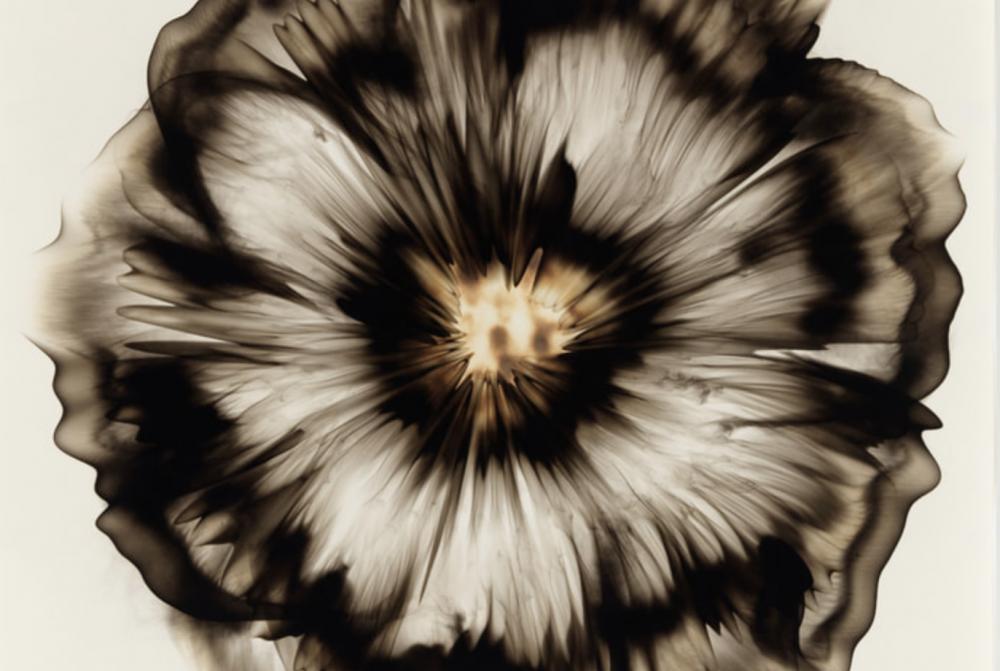Dennis Lee Mitchell grew up in the very small town of Larned, Kansas, and spent a lot of time outdoors where he developed a strong attachment to nature. When he went to Fort Hays Kansas State University in 1968, he planned on being an art major. Unfortunately his teachers told him he had no talent for art. But needing an art class to graduate he took ceramics. He could make plates and bowls, but he found his niche in hand built ceramic sculpture in which he imbedded found wood, lichen, peeled bark and other bits and pieces from nature. He went on the get an MA in ceramics in 1969 from Arizona State University and an MFA in 1971. In 1975-76 and again in 1977, he was awarded a National Endowment for the Arts Fellowship Grant and in 2004 a Special Assistant Grant from the Illinois Arts Council. From 2006 -2011 he had several successful exhibitions at Dubhe Carreno Gallery in Chicago.
While his ceramic sculptures were proving to be a success, he continued to explore a variety of techniques and materials. Just before he went on sabbatical in 2011, he inadvertently touched a piece of paper with a gas welding torch and unexpectedly made his first smoke drawing.
With the time, the inclination, a goal and the support of his gallery, he experimented with several gas torches, learned how to adjust the oxygen fuel mixtures, how to create more carbon smoke and even developed a pressurized can of smoke. “I can control parts of the drawing process and other parts I can’t. There’s always that edge where I know what I’m doing but don’t want to be too sure because that ruins the piece. I have to keep that edge kind of sharp where I never feel that sure of myself.”
“To a great extent,” he says, “I draw intuitively.” As one can see, his drawings are abstract but extremely suggestive. Most of his art is untitled, leaving interpretation to the viewer. In some we may see mountainous landscapes when Mitchell’s original inspiration, nature, appears. Some may suggest veiled figures and others the cosmos. Some resemble Chinese brush drawings or elaborate flowers. They may seem fragile or intangible and float away, or they may be solid and strong at the same time. As Mitchell says, “Material exists and then it changes, and it moves forward. Everything around you, everything you see, in the future will not be here. The smoke seemed perfect to me to start to discuss the human condition.” Whether the smoke drawings are smaller than 12 inches or larger at 50 inches they do not overwhelm us but have an impact that draws us in.
Mitchell has made smoke drawings since 2011, and like any artist has learned how to use his torch and to have some control over the work. He can create colors from a rich velvety black to the most elusive ephemeral grays and by scorching the paper he can create soft to rich browns. Unlike those of us who use paint, his work can literally go up in flames in an instant. He makes 100 to 300 drawings, but 90% of them go in the trash. Sometimes they catch fire. “I may make as many as 250 or more drawings to secure two or three finished works. The process is repetitive, as I attempted to dissolve expectations, glean the essence, and execute the act while circumventing spurious ideas. Involving chance, the process produces a kind of surrealistic sensuous rendering of the finite and the infinite.”
Mitchell’s smoke drawings have been consistently exhibited in several galleries in the USA and abroad since 2013. He has had frequent exhibitions at the Grimaldis Gallery in Baltimore and in 2019 at Gallery Neptune and Brown in DC. In 2015, one of his works was chosen by Ambassador and Mrs. Bass for their residence in Ankara, Turkey, under a new program started in 2015 by the US State Department. In 2016, he held a series of workshops for adults and children in Ankara and Istanbul. In 2020, his work was on exhibit at the Ukrainian Institute of Modern Art in Chicago. He is Professor of Art, Northeastern Illinois University, Chicago, Illinois (Emeritus). Yes, he has found a way to make smoke drawings on his ceramic pieces.
Beverly Hall Smith was a professor of art history for 40 years. Since retiring with her husband Kurt to Chestertown six years ago, she has taught art history classes at WC-ALL and Chesapeake College’s Institute for Adult Learning. She is also an artist whose work is sometimes in exhibitions at Chestertown RiverArts and she paints sets for the Garfield Center for the Arts.






Write a Letter to the Editor on this Article
We encourage readers to offer their point of view on this article by submitting the following form. Editing is sometimes necessary and is done at the discretion of the editorial staff.